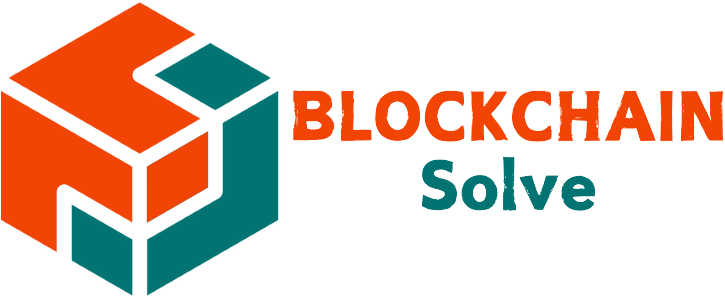In the world of digital assets, the integrity of every transaction is paramount. While blockchain technology is renowned for its security, this security is not absolute; it is a product of specific mechanisms and user behaviors. Understanding the essentials of securing blockchain transactions is no longer just for developers—it is a critical skill for anyone engaging with this transformative technology. This guide will break down the core principles and actionable steps you need to take.
The cryptographic foundation of blockchain security

At its core, securing blockchain transactions relies on sophisticated cryptographic principles. These are not abstract concepts; they are the active mechanisms that create a resilient and tamper-resistant system. Understanding them is the first step in appreciating how the technology protects every single transaction and ensures the integrity of the entire ledger.
How cryptographic hashing creates immutability
Every block receives a unique digital fingerprint called a hash. This fixed-length code is generated from the block’s data using an algorithm like SHA-256. Even a minor change to a transaction creates a completely different hash. This property links each block to the previous one, forming an unbreakable, immutable chain where any alteration is immediately obvious. This is a key part of what blockchain technology is and how it works.
Securing ownership with digital signatures
Digital ownership is managed through public and private key pairs. Your public key acts like a shareable account number for receiving funds. The private key is your secret password, used to create a digital signature that authorizes transactions. This signature mathematically proves you own the assets without ever exposing your private key. This process is fundamental to securing assets on the network.
Essential practices for user-level security
While the blockchain protocol is inherently secure, most vulnerabilities stem from user error. Protecting your digital assets is a shared responsibility. Adopting the right habits is crucial for securing blockchain transactions and preventing avoidable losses. These are the most effective practices every user should implement.
- Secure your private keys: This is the golden rule. Never share your private key or seed phrase. Store them offline in a secure, physical location, as anyone with access can control your funds.
- Use hardware wallets: For significant holdings, hardware wallets offer superior protection. They store keys offline, shielding them from online threats like malware. This is a key advantage when comparing undefined.
- Beware of phishing scams: Stay vigilant against unsolicited messages promising airdrops or rewards. Scammers use convincing fake websites to trick you into revealing your credentials. Understanding undefined can help you spot them.
- Double-check all addresses: Before confirming any transaction, verify every character of the recipient’s address. A single mistake can result in the permanent loss of your funds, as blockchain transactions are irreversible.
Network-level threats and consensus mechanisms

Beyond individual actions, securing blockchain transactions depends on the network’s design and the rules governing transaction validity. This is managed by consensus mechanisms, which are designed to thwart large-scale attacks. However, different threats target the network at this level, challenging its integrity and stability.
The threat of a 51% attack
A 51% attack happens when one entity controls over half of the network’s mining power or staked assets. This majority control allows them to block new transactions or reverse their own, leading to double-spending. While theoretically possible, a undefined as practically infeasible on major networks like Bitcoin due to the immense financial cost required to gain such control.
Vulnerabilities in smart contracts
On programmable blockchains like Ethereum, the security of smart contract code is critical. Poorly written code can contain bugs or loopholes that attackers exploit to drain funds from decentralized applications. The infamous DAO hack of 2016 is a prime example of this risk. Therefore, thorough third-party audits are an essential security step before deploying any smart contract to the network.
Advanced security measures and future trends

As the blockchain ecosystem matures, developers are creating sophisticated tools for extra protection. These advanced measures address specific security needs, from protecting corporate treasuries to enhancing user privacy. Staying aware of these trends is key to leveraging the best methods for securing blockchain transactions and staying ahead of emerging threats.
- Multi-Signature Wallets: These wallets require two or more private keys to authorize a transaction. This is ideal for businesses, as it prevents a single point of failure and protects funds from being compromised by a single lost or stolen key.
- Zero-Knowledge Proofs: This advanced cryptographic method allows a transaction to be verified without revealing any underlying data. ZKPs enhance privacy and security by shielding transaction details from public view while still confirming their validity on the network.
- Time-Locks: Smart contracts can be programmed with time-locks, which prevent funds from being moved until a predetermined future date. This feature is a powerful tool for securing assets in long-term vesting schedules or preventing unauthorized, immediate withdrawals.
Ultimately, securing blockchain transactions is a multi-layered discipline. It combines the protocol’s inherent cryptographic strengths with the user’s diligent security practices. By understanding both the foundational technology and the practical steps needed to protect your private keys, you can navigate the digital asset landscape with confidence. For more expert insights and guides on blockchain technology, explore Blockchain Solve and stay ahead of the curve.

